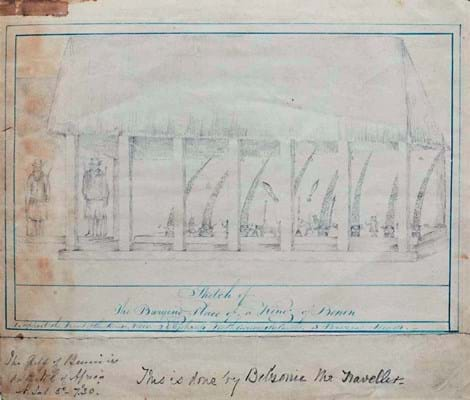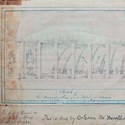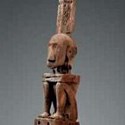Several surprises emerged in the tribal art sale held by Cologne auction house Lempertz (24% buyer’s premium) on January 29 in a sale held in Brussels.
Top honours went to a 4ft 4in (1.31m) wooden Babar ancestor post from the Moluccas (Maluku) Islands of Indonesia, which went from the guide of €10,000-15,000 to €44,000 (£37,290).
The auction also included an unusual 19th century drawing, estimated at €3000-5000, that has been the subject of extensive research. It was titled Sketch of the Burying Place of a King of Benin and dated October 2, 1822. An inscription in another hand states: This is done by Belzoni the Traveller.
Larger-than-life figure
This epithet refers to Giovanni Battista Belzoni (1778-1823), a larger-than-life figure: a one-time circus strongman, later a hydraulic engineer and a highly celebrated explorer.
Many of his Egyptian finds now belong to the British Museum, the Louvre and other international institutions.
In 1823, his final expedition took him by a circuitous route to Benin City, but he soon contracted dysentery and a day later he died, on December 3.
There is no doubt that Belzoni wrote the extensive descriptions of the burial site, the corresponding works of art and the ceremonies dedicated to the ‘Departed Kings’ on the reverse of the drawing.
As to the authorship of the sketch itself, several theories exist. It is possible that it is the original work of another explorer, later annotated by Belzoni, or that the drawing was a copy by Belzoni
It is conceivable, but not proven, that it was the work of Lieutenant John King, whom Belzoni had encountered in the autumn of 1823.
Historical significance
Whichever theory they choose to follow, the historical importance of the 9 x 11in (23 x 27cm) sketch has long been known to collectors, ethnographers and historians alike. It is, after all, the only existing Benin drawing from before 1890.
Its rarity was not lost on the international bidders at the auction on January 29, among them several museums, who pushed the price to €16,000 (£13,560), with the final bid coming from a buyer who prefers to remain anonymous.
£1 = €1.18


















